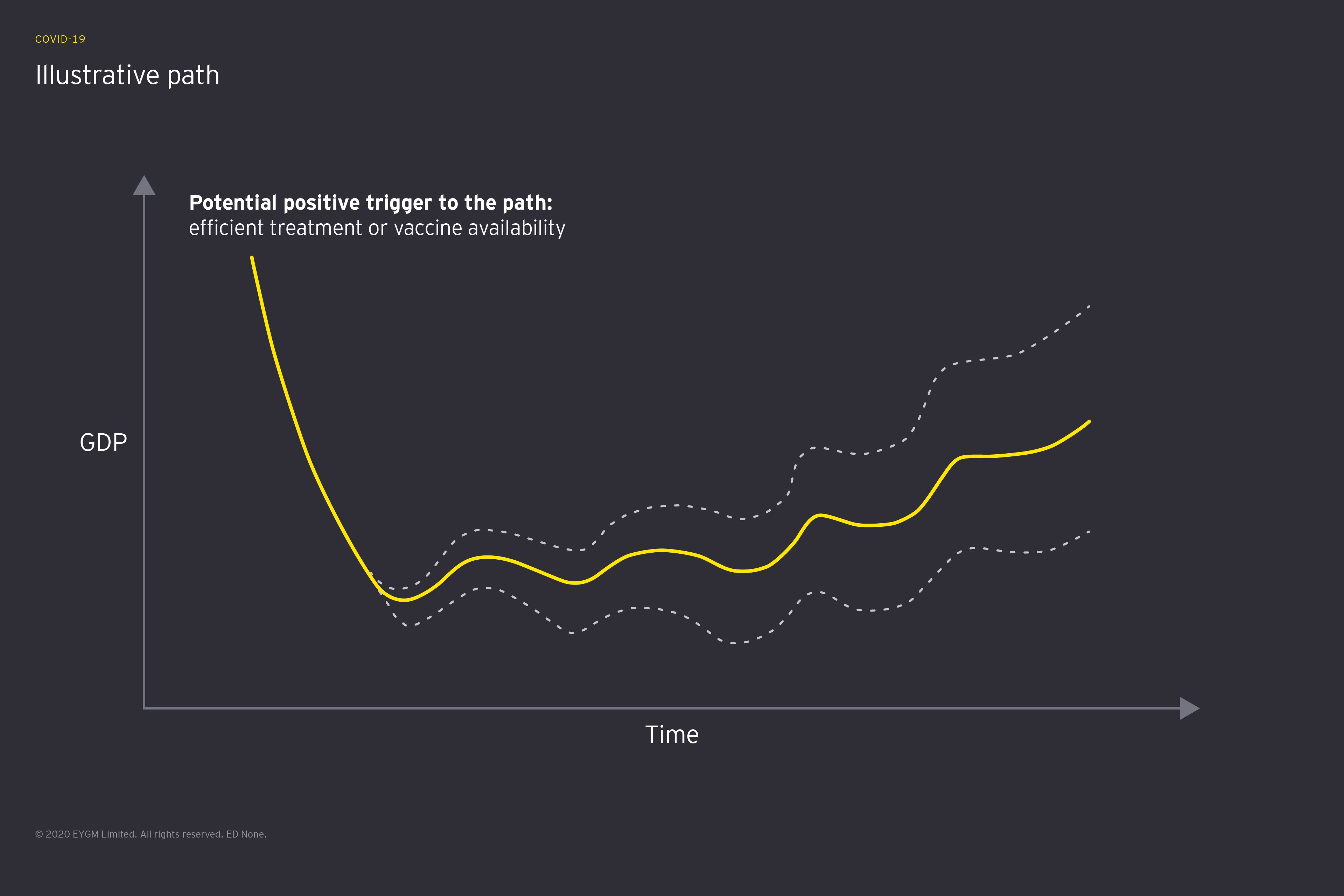Companies should increase agility and build resilience for a ‘saw-toothed’ economic recovery and a fast-changing environment.
The COVID-19 pandemic has presented governments, companies and individuals with an extraordinary global health and humanitarian challenge. The pandemic has also caused deep dislocations across the global economy, creating an inverse correlation between government actions to “flatten the curve” of infection rates and the depth of economic disruption.
But the pandemic’s effects extend far beyond economics. Virtually overnight, how we work, shop, save and spend has altered dramatically, as has what many of us prioritize.
The pandemic has presented us with a chance as much as a challenge: a chance to segue from a growth economy to a value-based economy, marked by prioritizing long-term value and the needs of multiple stakeholders over short-term growth.
Even before the COVID-19 pandemic, business leaders were being called to think not only about now, but what comes next and beyond. Companies already faced pressure to act more responsibly, and the crisis will only accelerate that. They will need to demonstrate they deliver benefits to society and the environment, not just the bottom line.
There’s also likely to be a resetting of the relationship between government and business. As the state’s role has expanded to cope with the crisis, the future will demand closer integration between public and private, working together to meet challenges, mend what’s broken and grasp new opportunities.
The initial crisis phase, the “now,” has a focus on survival: safeguarding human life, securing financial stability and establishing a risk command center. After this initial crisis phase, organizations are beginning to focus attention on the mid-term, the “next.”
Three horizons, each requiring a different focus for businesses

What comes next will have two business imperatives: the need to adapt operations and increase resilience. Companies will need to think about how to re-engage with their workforce; how to fix broken supply chains; how to achieve a lower and more agile cost base; and how to reduce operational risks and ensure customer access.
As they decide on these priorities, they will also need to think about what comes after. Changes in the global economy, technology adoption, societal norms and consumer behavior will together shape this future. Companies will need to ask: What can we do now to make us ready for what lies beyond?
Saw-toothed economic recovery
V-shaped? U-shaped? L-shaped? There is no shortage of potential trajectories for the world economy. We see something different: a saw-shaped recovery based on the assumption that no widespread effective treatment will be found for COVID-19 in the next 12 to 18 months. While governments and health services will be continually fighting flare-ups, they will have learned more sophisticated ways to suppress future outbreaks.
“While spikes in infections remain highly likely, the full national lockdowns that have brought economic activity to a standstill are less so,” says Patrick Winter, EY Asia Pacific Area Managing Partner. “The net result will be varying rates of growth for sectors and geographies, with periods of acceleration offset by setbacks.”
Most likely macro-economic scenario: a saw-toothed economic recovery

This economic environment will be marked by a slow-paced, uneven recovery.
In the case of more extended lockdowns, permanent losses in production capacity, job losses and pressure on the banking sector would increase. This more pessimistic scenario would result in widespread liquidity shortages and an L-shaped curve.
“The shape of the recovery curve will vary depending on individual countries’ ability to control infection rates within healthcare capacity,” says Marek Rozkrut, EY senior economist, “and according to different levels of exposure to global value chains.”
Mass-testing by governments allied to strong vigilance procedures can mitigate some of these effects and avert the worst of recessionary futures. With a saw-shaped, slow return to growth, we can expect some improvement in both consumer and business confidence.
But a saw-shaped, choppy return to growth demands organizations be far better at dealing with unpredictable shifts in the business environment. It will demand flexibility, resilience and fast reflexes.
By Falco Weidemeyer - EY





